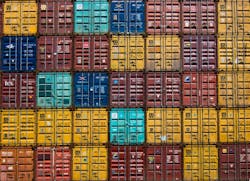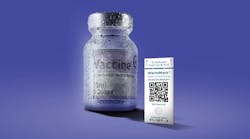As the biopharma industry focuses on finding a treatment to combat the COVID-19 pandemic, we have seen vaccine candidates for COVID-19 emerge and approved to move forward in clinical trials in record-breaking time. While this activity is underway, packaging suppliers are working behind the scenes to ensure they can meet major production demands. However, scaling up to manufacture a vaccine at such volumes can present many challenges, especially for packaging, unless suppliers strategically prepare for the needs of today’s biopharmaceutical supply chain.
Naturally, because of the number of vaccines needed to effectively subdue the spread of COVID-19, there is an increased packaging demand. It is essential that drug manufacturers prepare for unprecedented moments like these. Here are key considerations for manufacturers to ensure a robust packaging supply chain in a pandemic.
Collaborate on quality
To remain ahead of the curve, it is crucial that drug manufacturers work with packaging suppliers in the early stages to determine the best solutions for each vaccine candidate. This approach is the critical first step to ensuring that vaccines will be equipped with high-quality components free of contamination. Unwanted particles can serve as a major threat to drugs if found in the finished product.
Because the onus to ensure drugs reach patients in a sterile, secure condition up to and throughout point-of-use is on pharmaceutical and biopharmaceutical manufacturers, it is imperative to extend the quality-centric standards quintessential to drug manufacturing through the operations of their suppliers. Common contaminants that can transfer from packaging into drug formulations include cellulose, polyester, silicone, hair and various polymers such as polypropylene or polyamide. The manufacturing processes behind elastomere components for parenteral packaging must provide safeguards to mitigate the risk of contamination. These can include manufacturing processes that combine automation and cleanroom environments, cellulose-free plant floors and tamper evident packaging of the components.
Since patients depend on drug manufacturers to supply them with products that provide essential and sometimes, even life-saving treatments, there is no time or resource to waste on the issues that stem from defective or problematic drug packaging.
Find multiple, flexible suppliers
Just as drug manufacturers are quickly moving to introduce viable vaccines, suppliers are capable of manufacturing critical parenteral packaging at the same pace. Robust suppliers should be able provide solutions in a range of sizes and compounds. Thus, it is essential to work with suppliers that are ramping up production, and can effectively manufacture various vaccine packaging solutions while maintaining production for existing projects.
Because COVID-19 vaccines are needed on a global scale, it is key that drug manufacturers also work with several packaging suppliers that are investing in new equipment, staff, and materials to ensure maximum manufacturing capacity.
Prioritize suppliers with global networks
With travel bans in effect, it can be a challenge for packaging suppliers without a global network in place to source the raw materials needed to procure parenteral packaging.
For drug manufacturers looking to build packaging inventory in order to minimize lead time and reduce the potential for capacity constraints, it is essential to partner with suppliers that have already established a global supply chain so that necessary materials can be sourced — especially in a pandemic.







